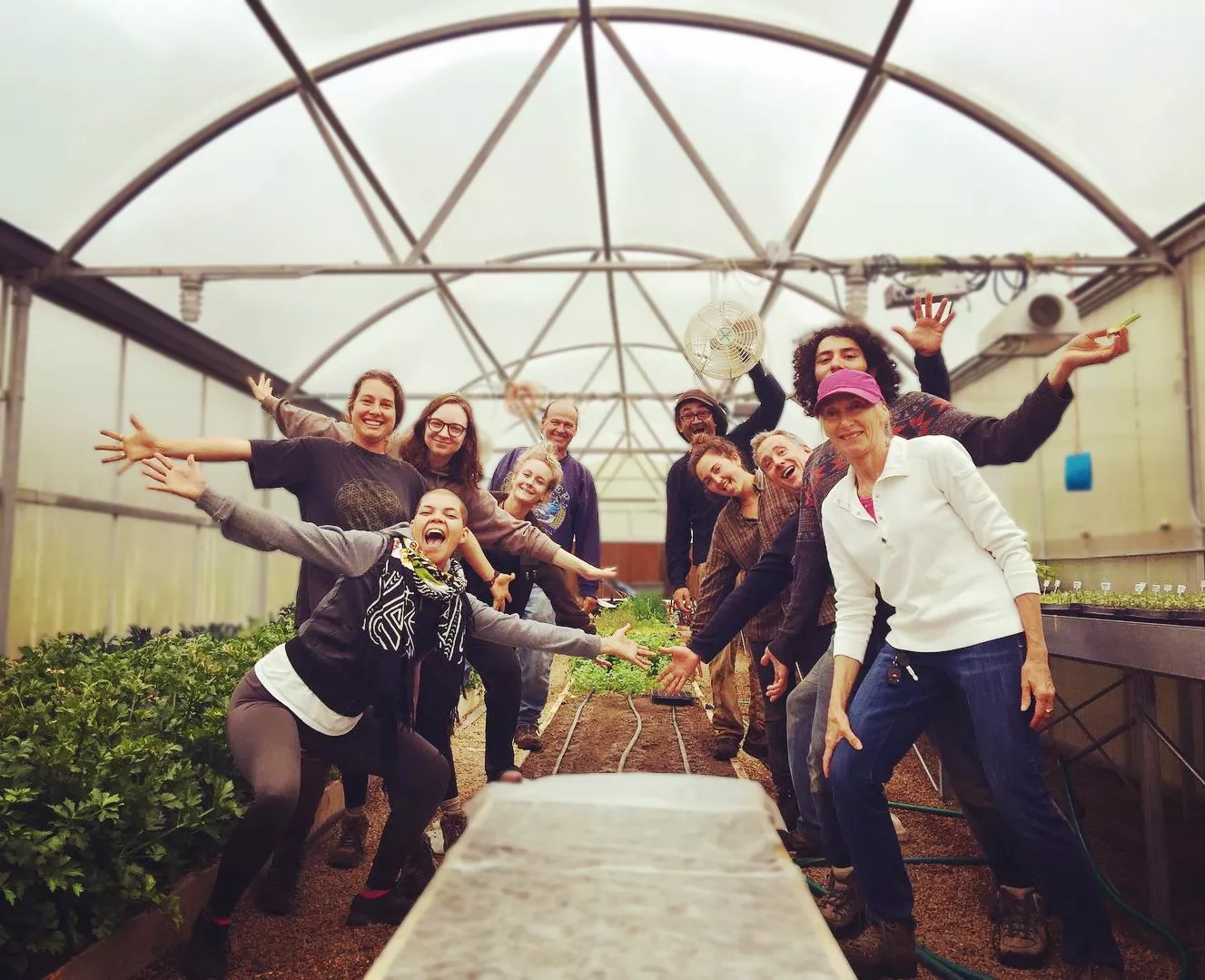
Deana Medina

Audio By Carbonatix
In 1945, the same year World War II ended, Lloyd Arthur Meeker, aka Uranda, and his followers in the Emissaries of Divine Light established Sunrise Ranch in Loveland as the headquarters of their spiritual movement.
The 400-acre ranch, organic farm and spiritual retreat center has become one of the longest-running intentional communities. It hosts events ranging from unicycle races to the massive ARISE music and camping festival August 2 to August 4.
Every year, music lovers wind up County Road 29 into a stunning valley with green pastures and large skies to unload tents and coolers, camp out, celebrate music and focus their energy on improving the world. Sunrise Ranch seems far away from the shopping centers, restaurants and gas stations lining I-25, though it’s only a fifteen-minute drive.
Festival co-founder and musician Tierro Lee attended a few workshops at Sunrise Ranch after being approached by a member of the Emissaries of Divine Light in 2012 to see if hosting a music festival on the property was feasible. The striated mountainsides make for impressive sunsets, and Lee decided it would be an ideal spot for a camping festival.
This year, make your gift count –
Invest in local news that matters.
Our work is funded by readers like you who make voluntary gifts because they value our work and want to see it continue. Make a contribution today to help us reach our $50,000 goal!
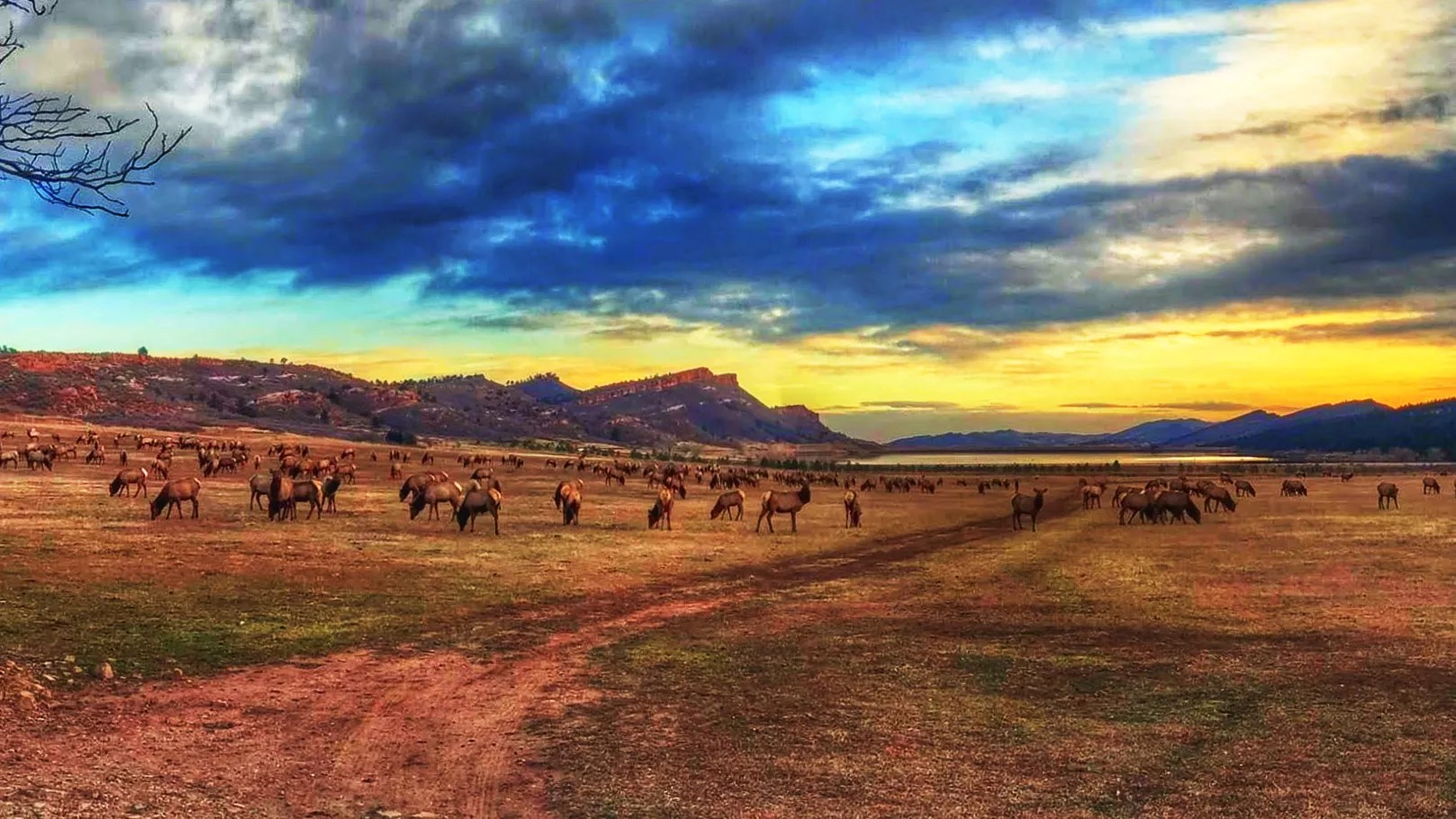
Elk in the pasture at sunset at Sunrise Ranch.
Jim Gray
Today, money from ARISE helps sustain Sunrise Ranch. Lee says the festival is independent of the spiritual group, though it hosts the Emissaries’ farmers’ market, workshops and a Sunday service.
In late June, Sunrise Ranch community member Roshana Ariel was busy preparing pamphlets to pass out at the festival. After working at a Kansas newspaper, Ariel moved to the ranch in 2016 for both spiritual and practical reasons. With six and a half years until retirement, she decided her vagabond spirit couldn’t survive any more time chained to her editing desk. The $70,000 she had in savings wasn’t enough to allow her to give her final notice, so Ariel started looking for alternatives to traditional retirement and discovered Sunrise Ranch. She signed up for a 27-week, Full Self Emergence Program, which, in a nutshell, aims to unleash a person’s creative spirit.
Today, Ariel is the editor and graphic designer for Sunrise Ranch’s website and informational platforms. She has her own apartment with amenities, a luxury. Most residents share communal areas like bathrooms, whether they live in shared homes or have their own private space. Ariel receives a monthly $650 stipend, free rent, free utilities and free maintenance and repair. Three free meals are also provided daily from food farmed on site.
Timothy Miller, a University of Kansas religious studies professor who’s studied intentional communities for over thirty years, has visited Sunrise Ranch multiple times as part of his broader study of intentional communities in the United States.
“I am endlessly fascinated with them,” Miller says. “My fascination is that these people are real idealists. They are trying to make a difference in the world, and that is pretty admirable.”
Such is the case with Sunrise Ranch’s founder. Uranda was a seeker concerned with existential questions. A sepia portrait of him hanging in the ranch’s dining room shows a man who looks part distinguished businessman and part stereotypical spiritual leader, with a mystical beard that rivals Rasputin’s.
During the Great Depression, before he led the group, Uranda was asking the big questions in life. In 1932, he had an epiphany that came to him in a silvery haze: The answers he was looking for already existed within him, and he was the guru he sought. From that revelation, Uranda began traveling the United States, sharing his discovery, gaining a following and creating the Emissaries of Divine Light.
Emissary spirituality values personal accountability and respect for life and nature. The central idea is that every person is a divine being in human form, and the purpose of life is to be who we really are. Following those principles allows Emissaries to connect with God or the “source” of life, they say. Emissaries participate in chanting, group prayer and attunement, a practice similar to reiki – a form of healing in which energy is passed, without touch, between the healer and the healed, to remove blockages and connect people to their true core.
Miller describes the Emissaries as new-agers, with a disclaimer: He hates to pigeonhole groups.
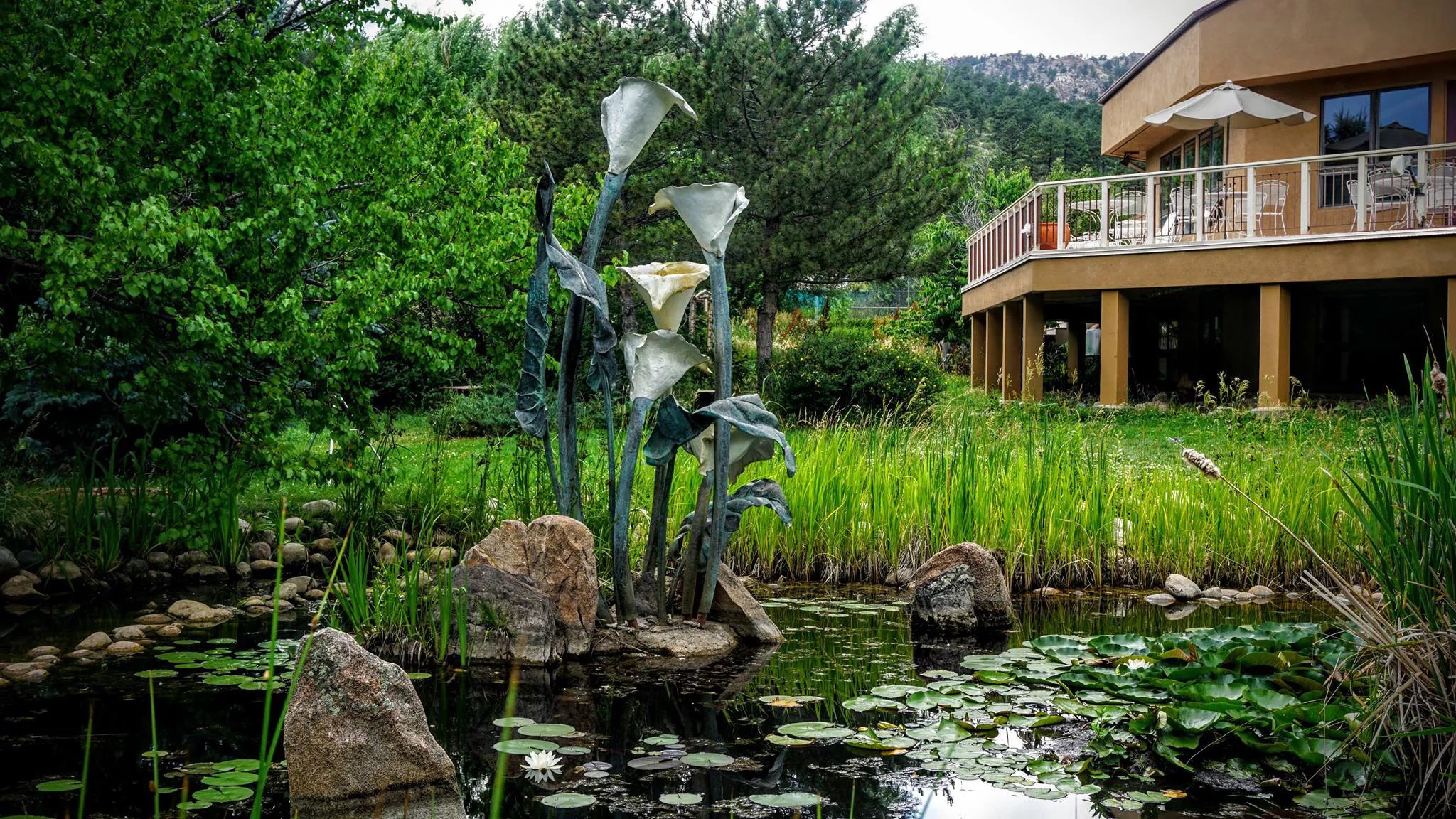
The pavilion at Sunrise Ranch.
Jim Gray
“The new age, as a generalization, likes to look toward a great culmination, a revolution in world consciousness. [The belief is] we have some amazing things out there waiting for us,” Miller says. “It’s pretty optimistic.”
That optimism remained with the group after Uranda died in a plane crash in 1954. His close confidant Martin Cecil was a British nobleman who became the second leader of the Emissaries. Under his leadership, the Emissaries of Divine Light grew to 4,000 members globally. Today there are other locations across the United States and in South Africa, Australia and Canada.
“[Cecil] was quite a man of character and integrity. He wasn’t charismatic in usual ways, but there was something about him that was so authentic,” says John Gray, a former Emissaries of Divine Light member who opened the now-shuttered Glen Ivy Hot Springs Emissaries location in Southern California.
Uranda and Cecil’s teachings laid the groundwork for the Emissaries. The group’s spiritual text, The Third Sacred School, is an eighteen-volume collection of their teachings compiled over 55 years.
“Lloyd Meeker was a very outgoing person. He loved the land. He loved the people. He’d get down in the dirt and plow the fields. If something broke, he figured out how to fix it,” says Diana de Winton, one of Sunrise Ranch’s oldest members, though she never knew Uranda. In comparison, Cecil was more formal and quiet.
It was Cecil who taught attunement to de Winton’s father, Roger. De Winton grew up in Calgary, Alberta, Canada in the 1950s. Her mother struggled with breast cancer, which metastasized and left little to be done.
“My dad was looking for some form of healing for my mom,” de Winton says.
De Winton’s mother died, but the energy healing helped with her pain. Roger then moved to Sunrise Ranch with his two daughters in 1957, when de Winton was thirteen. It was very rustic at the time compared to the private neighborhood it’s become today. There were outhouses, and the living spaces were bare-bones.
“An elderly gentleman who lived here at the time called this the ‘Headquarters of the Kingdom of Heaven on Earth,'” de Winton says. “And I am looking around for the pearly gates.”
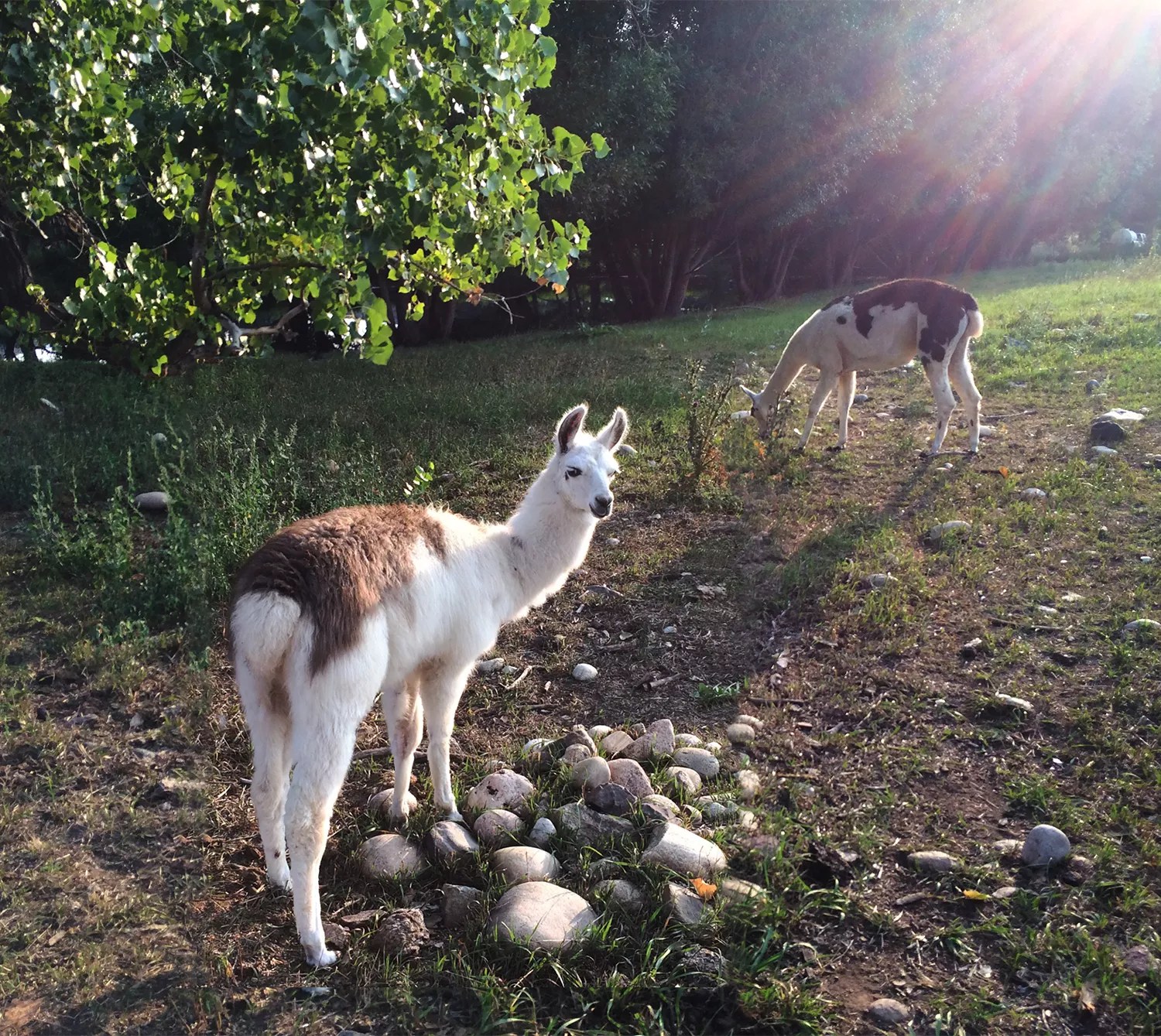
Ziggy and Mama Llama live at Sunrise Ranch.
Roshana Ariel
But de Winton enjoyed life at Sunrise Ranch despite its lack of plumbing. She and her older sister enrolled in public school and 4-H Club, but she kept where they lived under wraps because of outside opinions.
“When this place was considered strange, we worked with either being [called] a nudist colony or a communist camp,” de Winton says. “That was the opinion in Loveland, so I didn’t say too much. There were opinions and ideas even among the teachers there, but that’s changed. Times have changed.”
Some outsiders and former members describe the Emissaries as a cult.
“What’s a cult?” Miller asks. “I think the best definition is it’s a religion you don’t like. There is a lot of prejudice against [intentional communities]. It’s largely ignorant. We are raised in an individual culture here, and anything collective is wrong.”
Current spiritual leader David Karchere, a former IBM employee from Connecticut, says he wears the cult claim as a badge of honor.
“In my view, there are massive cultic organizations in the world. Modern-day for-profit organizations can be like that. For instance, the military can be like that. Religions can be like that – even the more conventional ones, so I’m happy at being unconventional,” he says.
In a world where religious practice in general is waning and individuality is prized, many communal living situations don’t survive. Miller himself joined an informal community in the ’70s, but when the romantic relationships within it broke up, so did the group. Zoning laws often cause issues. And Miller says intentional communities can attract the wrong people: They either don’t want to work or they want to run the show. Some intentional communities choose to stay isolated to avoid the drive-by traffic of uncommitted members.
“One of the things about living communally is you have to give up your ego,” Miller says. “You can’t decide you are going to be the person who is making decisions and running things. If you do, then you’re not going to succeed very well.”
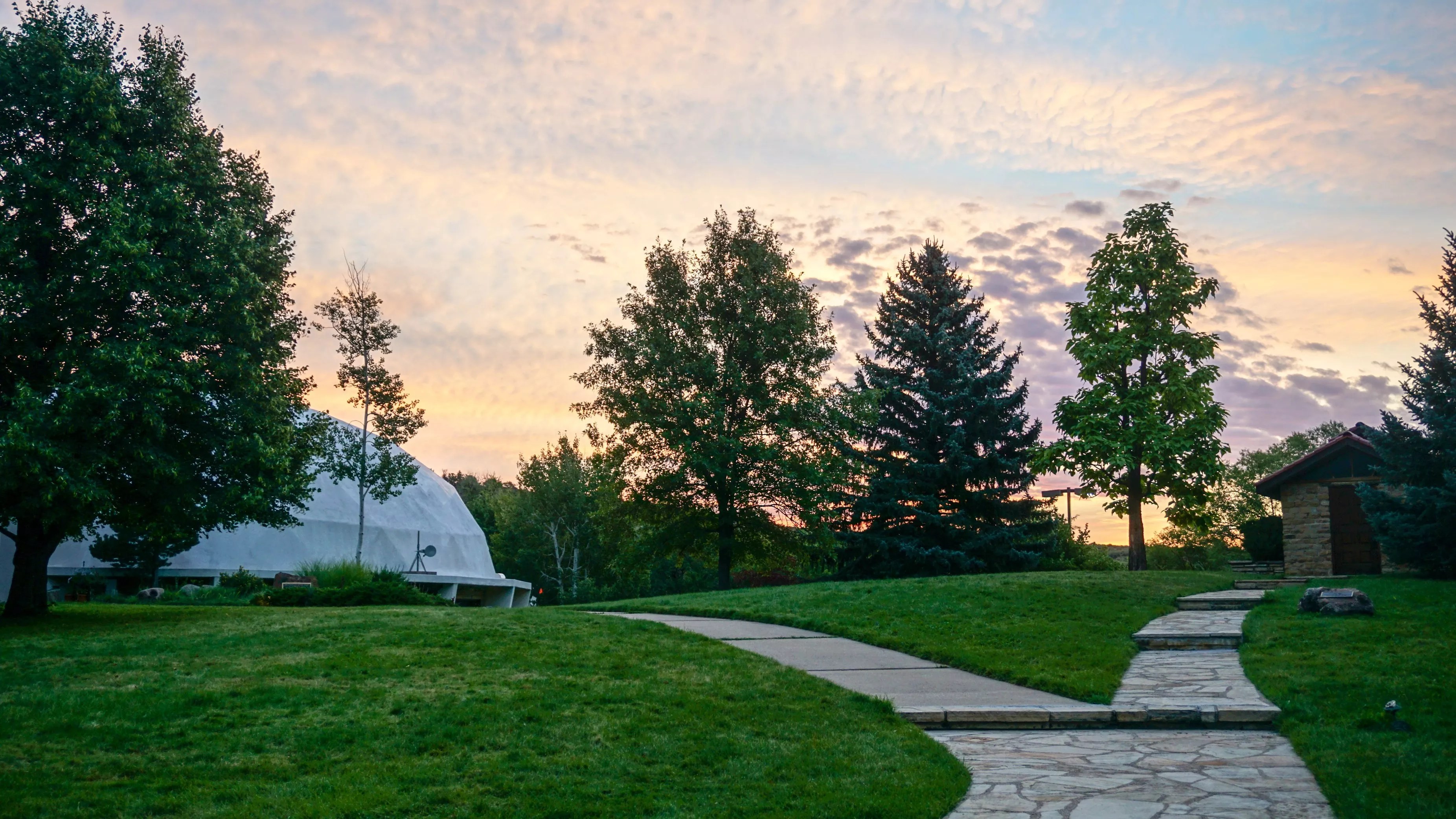
The Dome and the Little Chapel are used for services at Sunrise Ranch.
Jim Gray
Sunrise Ranch encountered some turbulence after Cecil’s unexpected death in 1988. The group splintered.
“It was traumatic for a lot of us when Martin died. He left a void,” says Sandy Brown Jensen, an Emissary during Cecil’s leadership. “There was a lot of politicking and jockeying for the position, and unpleasantness in general. I’ve heard hours and hours and hours of gossip around that topic.”
Cecil’s son, Michael, took over but eventually walked away from the group in 1996.
“Succession for an organization like that is always a challenge,” Gray says. “Michael stepped into the role, but it wasn’t natural to him. After a few years, it was evident it wasn’t his thing.”
After that, the Emissaries were in a transitional phase and were led by a board of trustees before Karchere was elected as the spiritual director in 2004. He transitioned the group from being funded by donations to being sustained by other businesses, such as the retreat and conference center and events like ARISE.
“While Martin was alive, there was such purity about everything. You could take the most idealistic view of what might be possible, and you could taste it and smell it like it was real.” Gray says. “There was an aura about the office that vanished when [Cecil] did, and frankly, in my view, the organization lost its way.”
Miller says intentional communities as a whole have been slowly declining after the surge of communes in the ’60s and ’70s.
“[The Emissaries] are a movement, pretty seriously in decline as I understand it,” Miller says. “I don’t know why. It’s an attractive place in a lot of ways.”
ARISE Music Festival, August 2 to 4, Sunrise Ranch, 100 Sunrise Ranch Road, Loveland. Find out more at arisefestival.com.